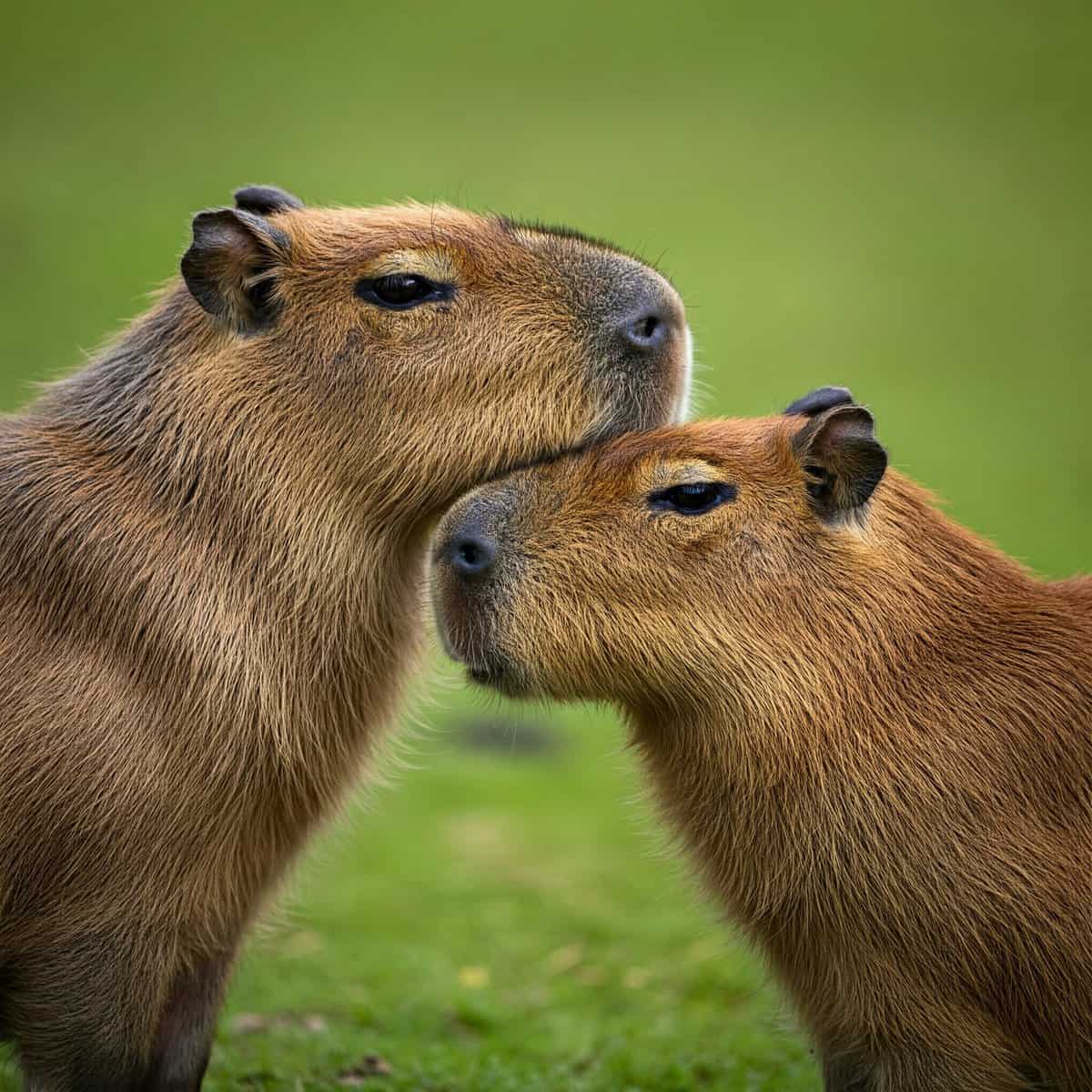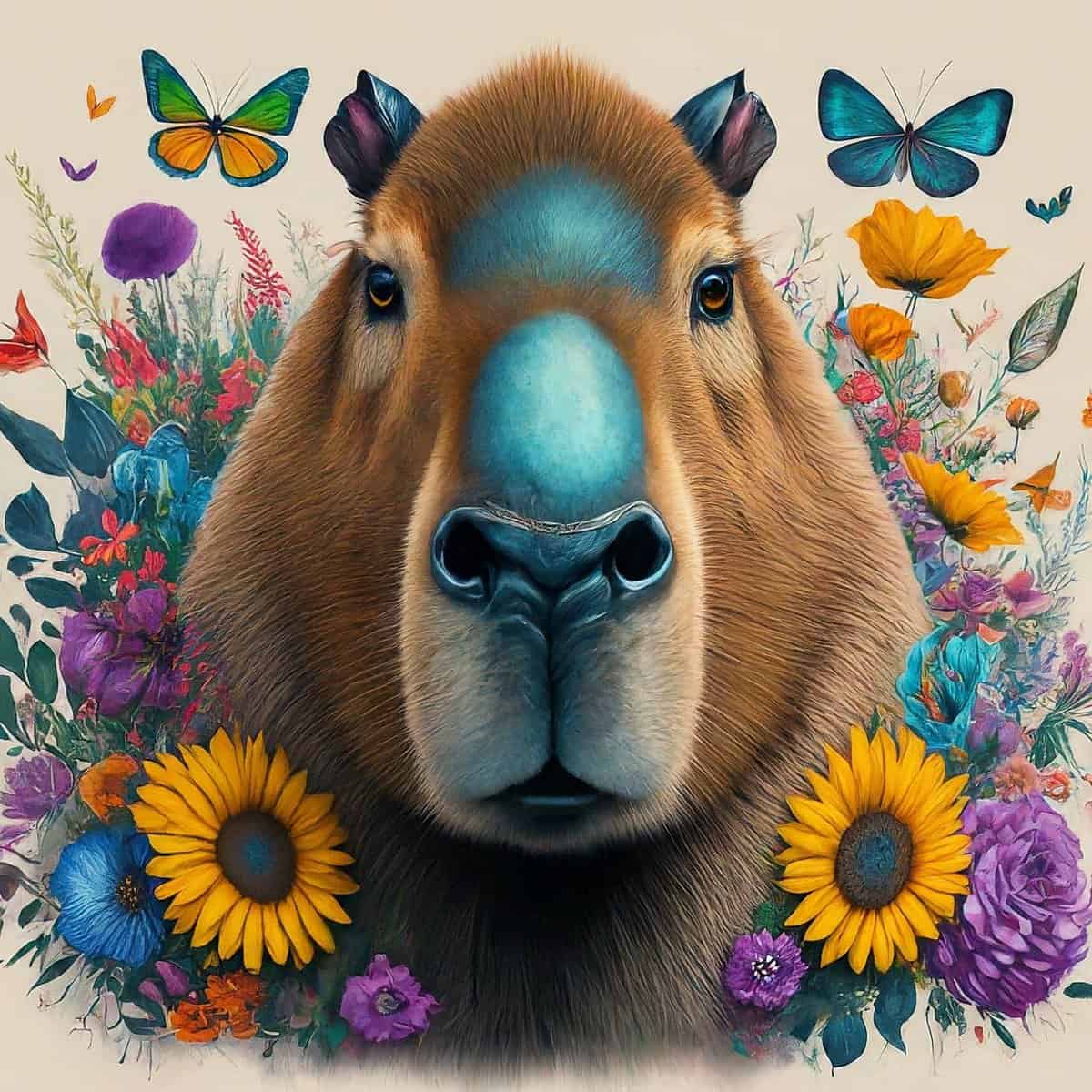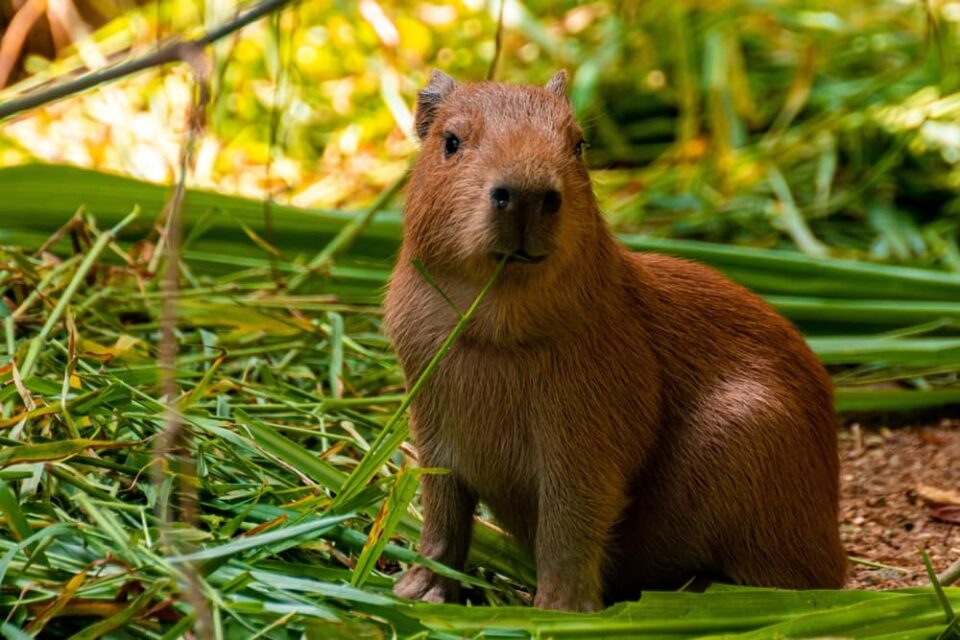It’s easy to overlook the amazing diversity of the animal kingdom, especially when it comes to larger species. Among them, the capybara stands out as a remarkable giant guinea pig, and it’s intriguing to learn about them.
These fascinating aquatic mammals are the largest members of the rodent family, Rodentia, weighing up to 150 pounds.
| Species Name | Scientific Name | Average Weight | Notable Features |
|---|---|---|---|
| Capybara | Hydrochoerus hydrochaeris | 35-66 kg (77-146 lbs) | Largest living rodent; semi-aquatic; herbivorous |
| Beaver | Castor canadensis | 16-32 kg (35-70 lbs) | Known for building dams and lodges; semi-aquatic; herbivorous |
| Porcupine | Erethizon dorsatum | 5.4-15.9 kg (12-35 lbs) | Distinctive quills for protection; herbivorous |
| Agouti | Dasyprocta spp. | 2-6 kg (4.4-13.2 lbs) | Agile climbers and diggers; omnivorous |
Native to warm climates in South America, they thrive in social environments.
Often found lounging in groups, these large rodents exhibit charming social behavior, which makes them quite endearing. Their diet mainly consists of grasses and aquatic plants, which is fitting for this social herbivore, often referred to as the giant guinea pig of South America, as they thrive in environments abundant with these resources.
Click here to learn more about: tools
Understanding Capybaras: The Largest Rodents
Have you ever seen an animal that seems to embody a perfect blend of friendliness and curiosity? These social mammals thrive in vibrant ecosystems, often spotted lounging in wetlands and grasslands. They form close-knit groups, enjoying each other’s company while foraging for delicious grasses and aquatic plants.
Their impressive dimensions make them the largest of their kind, easily weighing up to 150 pounds! This bulk not only adds to their charm but also aids them in their semiaquatic habitats, where they shine as excellent swimmers.
As these grazers roam their territories, they showcase a beautiful harmony with their wildlife surroundings, adapting perfectly to their unique habitat.
It’s fascinating how such remarkable creatures contribute to the ecosystems they inhabit that support diverse wildlife, including various mammalian species, by providing essential habitats for foraging grazers, semiaquatic creatures, and burrowing animals.

How Do Giant Guinea Pigs Fit In
Have you ever thought about how different creatures can make their mark on the world? Among them are giant guinea pigs, often surprising folks with their impressive size and charming personalities. As members of the rodent family, they stand out not just because of their size but also due to their unique fur.
Unlike many smaller rodents, these gentle giants can reach impressive dimensions, showcasing their adaptability and social nature.
Their interactions reveal a fascinating ecological role that contributes to the biodiversity of their environment.
It’s a remarkable sight to see them thrive as they engage with their surroundings.
The Role Of Rodentia In Ecosystems
It’s easy to overlook the impact of small creatures in our environment, but these furry beings certainly make waves. They serve as a key link in the web of life, influencing population dynamics and helping maintain biodiversity.
Their presence provides sustenance for numerous predators, reinforcing the intricate food chain.
As they scurry about, their territorial behaviors foster unique ecological interactions in various habitats, from forests to grasslands.
Not just that, but their diet mainly consists of seeds and plants, which they assist in dispersing, promoting plant reproduction. Isn’t it fascinating how these unassuming animals shape our world? Transitioning from their roles, let’s explore how giant guinea pigs fit into this complex puzzle
Conservation Strategies For Endangered Species
Every creature contributes to the intricate balance of our ecosystems, and when one falters, it can lead to a ripple effect. Conservation plays a key role in addressing issues like habitat destruction, which threatens countless species.
Restoring homes for wildlife is not just about saving individual animals; it’s about reinforcing whole ecosystems, so every living being has a chance to flourish.
Local community efforts, along with advancements in technology, open up a world of possibilities for making a positive impact.
Whether it’s through wildlife photography to raise awareness or strategies to manage urban wildlife, every bit helps. Together, we can champion our planet’s stunning variety of life and ensure it thrives
| Conservation Efforts | Impact on Ecosystems |
|---|---|
| Restoration of habitats | Supports biodiversity and ecosystem health |
| Local community involvement | Enhances awareness and action towards wildlife protection |
| Use of technology in conservation | Improves monitoring and management of species |
| Wildlife photography initiatives | Raises public awareness and fosters appreciation for nature |
Conclusion
Reflecting on our shared journey highlights the importance of our contributions to safeguarding wildlife. Every effort plays a part in maintaining ecological balance and promoting animal welfare.
Appreciating natural history helps us understand how these magnificent species flourish in their habitats.
Supporting conservation initiatives through education and awareness is key.
Whether our actions are large or small, they can lead to meaningful impacts on the preservation of endangered species and their environments. Let’s embrace this knowledge and work together as a community to make a lasting difference in the lives of these incredible animals, ensuring their welfare and ecological balance through informed animal husbandry, carefully designed zoo exhibits, and impactful research studies that protect endangered species and manage invasive species while celebrating their natural history.

